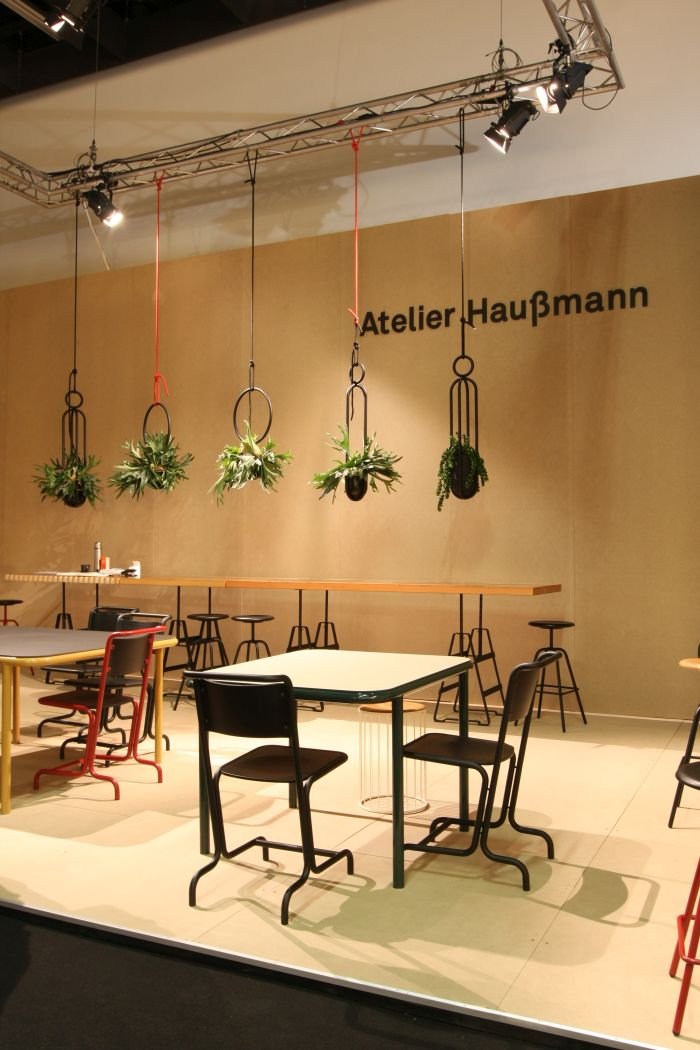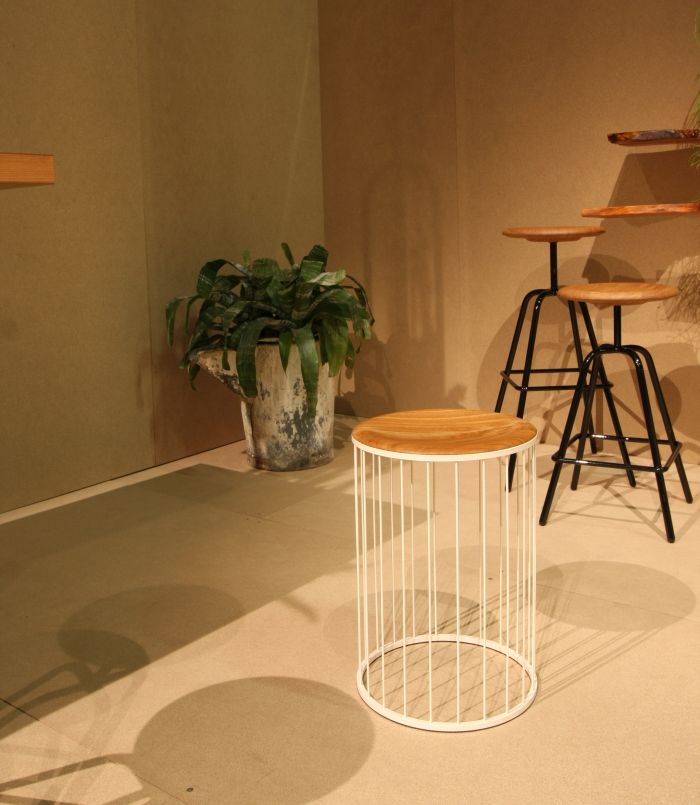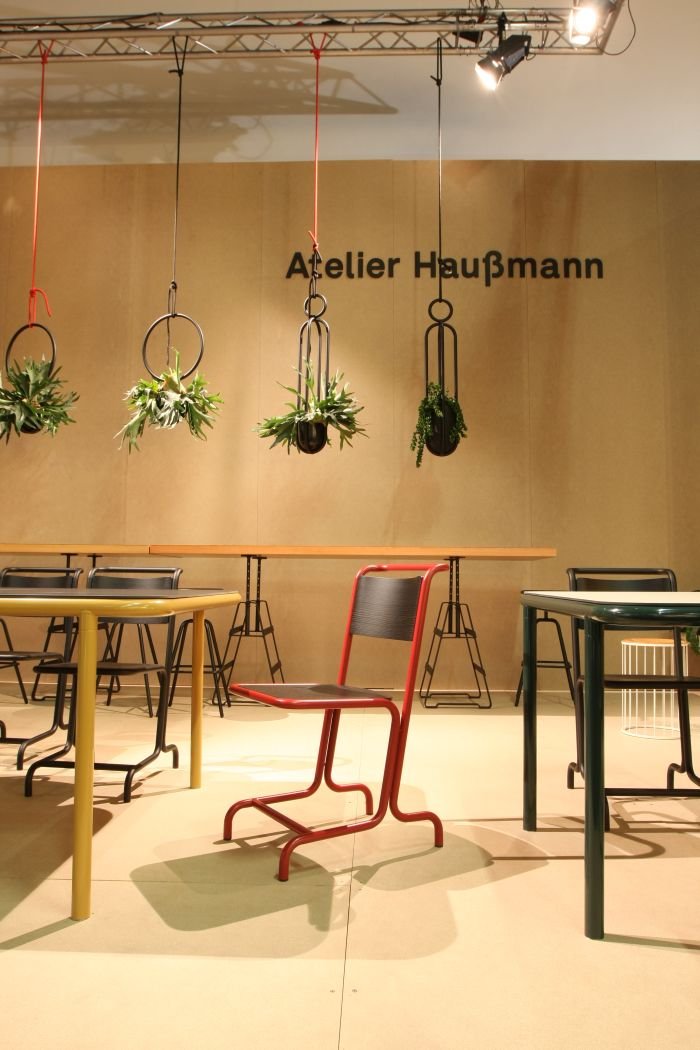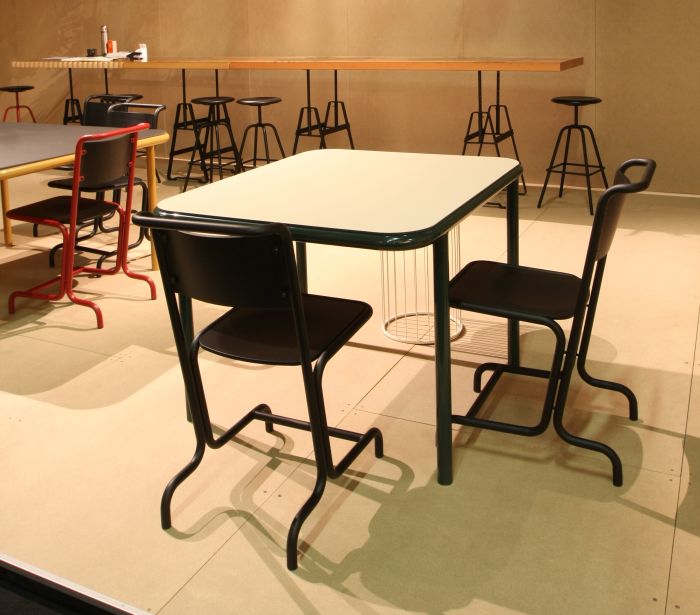While Georges-Eugène Haussmann is associated with the radical and unrestrained, Atelier Haußmann prefer the understated and reserved. Yet applied with the same level of conviction, self-confidence and appreciation of a well considered line.
Following a couple of years absence 2018 saw Atelier Haußmann return to IMM Cologne....

Established, or perhaps better put, evolved in the course of the 1990s in Berlin-Kreuzberg by brothers Andreas & Rainer Haußmann, Atelier Haußmann has, as with most Berlin creative practice's of a similar vintage, relocated several times as the city has developed around them, and are currently based in the south-east of the city in Oberschöneweide: an easily overlooked suburb yet one which as noted before in these pages, played a key role in the development of Berlin as an industrial power, and which today is home to a deceptively active creative community.
From an initial collection of, largely, self designed objects the Atelier Haußmann portfolio has grown to include objects by a wide roster of, largely, Berlin based designers, and objects which despite their variety all reflect the same no nonsense, yet inherently personable and sociable, character of the original Haußmanns.
In addition to providing a very welcome wiedersehen with objects such as the Herrenberger stool, the 2PM day&night day bed and for all the Blumenampel by Zascho Petkow, an object which remains one of our reference pieces, one of those islands of stability to which we return whenever we start to question what is good design?, what distinguishes the chaff from the wheat?, what are we actually doing with our lives?, Atelier Haußmann also used their return to IMM Cologne to launch a couple of new projects, and projects all, effectively, realised in Oberschöneweide.

While admittedly not fully convinced about the name, the Hipster Stool by Federik Sonnenberg and Lukas Semmler is a very convincing object.
Constructed from steel rods connected to a metal base and wooden seat the Hipster Stool is at first a neatly reduced object whose simplicity and clarity makes a very self-confident nod to the early days of American Mid-Century Modernism; and is at second a thoroughly satisfying sitting experience, for the steel rods are spring steel rods and consequently the stool moves, rocks, gently with you.
As a species we're not meant to sit still, and in practice rarely do, regardless of where, why or on what we sit, our bodies take every possible opportunity to move. Yet normally have far too few such opportunities; the frustration that builds in our muscles and joints being on a par with that provoked by the indecisive person in front of you in a queue. You want to get on with your life, but can't! Your body wants to move, but can't! Sitting on the Hipster Stool you automatically, involuntarily, do: not sketching huge great circles in space, but just ever so slightly, forward, backward, sidewards, round and round and round. Naturally and in which ever direction your thoughts subconsciously take you. And thereby with the most delightful feeling of freedom and control.
And that in a stool which (we are certain) will fit effortlessly into any space. While there are a few rocking/swinging/mobile stools that do possess just such a well designed anonymity, they are rare, preferring as they do to underscore their functionality. Hipster is intelligently subtle, and therefore universal.
Not that for us Hipster is a stool that belongs in the "ergonomic" category, for us it is just an eminently sensible and logical sitting device, be that at a desk or while on the telephone, in a meeting, waiting for your potatoes to cook, casually considering an alternative name for the stool on which you are sat, etc, etc, etc

On being introduced to the Laszlo Chair by Berlin architect Andree Weißert our first thought was Heinz Rasch's assertion that the reason his diagonally orientated cantilever chairs never achieved the same popularity as those of his contemporary Mart Stam, was that on account of the quadratic nature of rooms only cubic chairs which reflect this geometry are accepted by the public. And while tastes and aesthetic understandings have evolved since the 1920s, there remains a natural tendency to shy away from chairs who's form language doesn't reflect certain norms.
Laszlo understands a "Norm" as a 1980s sitcom character, "Norm!!"; a healthy disposition and a suitably unconventional object which makes a very strong case for being a little braver in your furnishing choices.
Essentially formed from two bent steel tubes, Laszlo is a pleasingly logical piece of design, one which lets the construction dictate the form, without completely abdicating its responsibility for the functionality: the angle of seat and backrest provide a high degree of sitting comfort, something supported, as it were, by the natural buoyancy of the steel tube construction. The stretcher between the sunken front legs neatly allowing for a range of alternative sitting positions, while the curve of the base itself leads one almost to expect orb clutching clawed feet at the end of the tubing. Fortunately there aren't.
Complementing both Hipster Stool and Laszlo Chair is the Bologna Table by Andreas Haußmann.
An eminently, pleasingly, simple, unobtrusive object, Bologna has a uncompromising honesty, the diameter of the tubular steel is well proportioned to the thickness of the linoleum covered MDF table top, the construction principle as practical as it is logical, the visual created by the non-cornered legs familiar as its is thoroughly unexpected, and all in all an effortlessly accessible object which it in our contemporary shoutie world is all too easy to overlook. But then, it is an Atelier Haußmann object developed in Oberschöneweide.
Full details on Atelier Haußmann can be found at http://atelierhaussmann.de/
